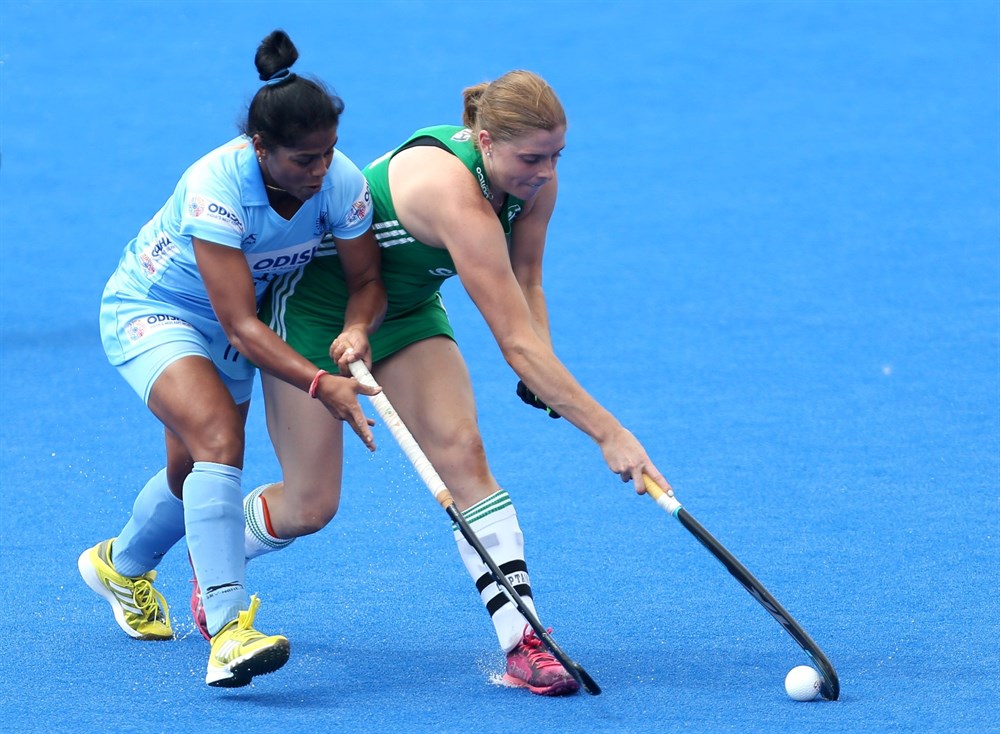World Cup: Is this the settled format for future?
Share
Cross-over playoffs between second and third placed nations in each pool and judicious scheduling of matches in the Women’s World Cup hockey tournament in progress in London suggests an FIH initiative to cope with the flip-side of running a larger tournament that involves 16 teams — an increase of four.
Earlier, 12 teams split over two pools assured every nation a minimum of five matches. Now, 16 split over four groups drastically reduces matches.

A simple four-team pool format producing two qualifiers for the quarterfinals would have offered a minimum of just three matches with many a nation’s campaign in danger of ending after a mere two match days.
That didn’t augur well for the future of the lower-ranked nations grappling for funding, sponsorship and exposure.
The organizers then turned to a cross-over format similar to one used at the 2002 Commonwealth Games in Manchester.
This, a smart move, qualifies the winners of each pool directly to the quarterfinals leaving the second and third-placed teams fighting for the other last-eight spot in playoffs.
So, if a team loses its first two matches, there’s still a chance to squeak into the playoffs with a victory in the last encounter.
And with the fixtures shrewdly set to allow interest for most of the participants to be dragged as far as possible into the league phase of the tournament, lower-ranked nations sustain interest and the adrenaline flow at least to the half-way mark of the event.
It, however, has shown up some unusually large number of rest days. The Netherlands, for example, found themselves with five rest days after their opener against South Korea.
So much so that the team management decided to break the monotony and possible boredom by moving its location to a new hotel as a refreshment.
Interesting, and most welcome ironies, were produced in a competition that is proving to be memorable.
The lowest-ranked in the competition, Italy at 17, secured a playoff spot with victories over China and South Korea, probably sending their team manager into a tizzy to re-schedule travel plans back home.
And Ireland, ranked 16, was the first team to qualify for the quarterfinals. Considered also-rans in pre-event assessment, the Irish qualified directly from Pool B with two straight wins over USA and India, leaving their last encounter against hosts England academic from their point of view but crucial for their much fancied opponents who have yet to seal a playoff berth.
It appears, lessons were learned from the men’s World Cup qualifier in Edinburgh, Scotland, in 2001 where the standard format of qualifying the top two from the pool for the quarterfinals didn’t do justice to the idea of promoting the sport.
The 2002 Men’s and Women’s World Cups in Kuala Lumpur and Perth respectively split 16 teams into two groups, entailing 76 matches including classification fixtures.
But such a match-heavy competition is far from feasible today, given financial, time, TV broadcasting constraints and the enormity of organization.
Not surprisingly, the next editions were condensed to the earlier 12-nation two-pool format that remained unaltered till the 2014 events in The Hague, The Netherlands.
NOTE: The author was with Times of India till recently. He will be writing exclusively for www.stick2hockey.com


